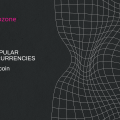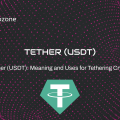Imagine a world where you could send and receive money from anyone at any particular time without necessarily using a bank or other traditional financial institutions. This is the promise of digital currencies, an innovative type of virtual money that is turning the conventional approach to finance on its head. But what are the actual digital currencies, and how are they, in fact, different? Now, let us go deep into this vast world and discuss the various types of virtual currencies today.
What Are Digital Currencies?
Simply put, a digital currency is a digital or virtual currency with an added layer of security through cryptography. Unlike government-issued physical money, known as fiat money, digital currencies use peer-to-peer networks with a system known as blockchain, a computerized record of transactions managed by a large network of computers called nodes. This has given digital currencies a decentralized nature, a strong characteristic that differentiates them from conventional monetary structures.
The first and probably the most famous digital currency is Bitcoin, which was introduced to the world in 2009 by an unknown person or group that goes by the nickname Satoshi Nakamoto. They adopted a decentralized electronic cash system known as Bitcoin, eliminating the need for intermediate third parties. Since then, thousands of Digital Currencies have appeared in the market, each developed with peculiar features and applications.
Types of Digital Currencies
In another perspective, digital currencies can be classified into several types depending on their deployment and use. Here, discussing some of the most popular categories that attract customers’ attention would be appropriate.
Bitcoin (BTC)
Bitcoin is the most popular and significant digital currency and the first to appear worldwide. It is based on a peer-to-peer network and uses the proof of work algorithm for consensus. Primarily as a store of value and a medium of exchange, it is often called ‘digital gold.’ Bitcoin’s principles include but are not limited to A predetermined total of 21 million bitcoins, a high level of security, and more acceptance globally. Compared to traditional currencies, it has a fixed number of units. Therefore, it is deflationary, which is beneficial in the context of inflation.
Altcoins
Altcoins refer to any currency other than Bitcoin; normally, these new forms of currency are still under development. They comprise many types of digital currencies with different characteristics and intended uses.
For example, Ethereum (ETH) has a function called Smart Contract that allows application developers to deploy decentralized applications on the Ethereum blockchain. Litecoin (LTC) is known as silver compared to Bitcoin’s gold as it has a different hashing algorithm and offers the advantage of faster transaction processing times. Ripple (XRP) is a cryptocurrency designed to execute transactions, including real-time payment transfers across borders, making the coin a darling of banks and payment processors. Every altcoin has a specific role, and the variety provides various advantages to the decentralized monetary system.
Stablecoins
Stablecoins are built in a way that tries to avoid fluctuations by having their value linked to a more stable asset like fiat or physical assets. In this case, we find that stablecoins are of various categories. Fiat-backed stable coins are fiat-collateralized, and fiat currencies underpin them. Crypto-collateralized stablecoins are directly linked to other cryptocurrencies, so some other coins support the value of the tokens. On the other hand, centralized stablecoins are pegged with fiat currencies, where the supply and demand of the tokens are regulated through algorithms to ensure the token’s value is maintained. Such virtues are in contrast to conventional cryptocurrencies that have volatile price swings, which makes these kinds of stablecoins suitable for use in making everyday purchases.
Privacy Coins
Privacy coins hold a policy of anonymity for users and non-disclosure of transaction details. They employ highly complex algorithms to mask the details of every transaction that is being made. For instance, Monero (XMR) promotes privacy through ring signatures and confidential transactions. Zcash (ZEC) has an optional layer of anonymity implemented through principles of zero-knowledge proofs to hide transaction information. Privacy coins are vital for users who prefer anonymity and do not wish to disclose information on their transactions.
Utility Tokens
Utility tokens can be described as tokens created in a blockchain-based project that grant the holder certain rights in the framework of that project, such as access to a particular product or service offered by the project. We will briefly discuss the utility of Binance coin (BNB) within the Binance ecosystem. Chainlink (LINK) uses tokens to pay for services within the decentralized Oracle network, providing smart contracts with real-world data access. Utility tokens are designed to operate on the relevant platform as intended.
Security Tokens
Security tokens are tradable digital assets with legal tender backed by an underlying asset and come under the regulation of securities laws. tZERO (TZROP) is a security tokens trading marketplace that utilizes blockchain and aims to provide equity ownership in the market. Polymath is a security token creation and management operating system that allows the creation and trading of security tokens. Security tokens can represent traditional assets, making them more liquid.
Governance Tokens
Governance tokens are tokens that enable holders to have the right to vote on decisions within a blockchain project. Uniswap (UNI) has a delegation feature that allows its holders to vote on proposals related to decentralized exchange. It is used to vote on protocol changes in the entire Maker ecosystem in the MakerDAO. People’s voice is an essential element, which can be achieved through the use of governance tokens, which allows for decentralized decision-making.
Real-world Applications
Cryptocurrencies and blockchain technologies have remained investment tools with high risk and are applied in various fields. They facilitate cross-border payment processing quicker than the banking systems do in finance. Some new generation projects, such as Ripple and Stellar digital assets, aim to change the cross-border payments system. Games on the blockchain platform incorporate cryptocurrencies for purchasing in-game assets and incentives. As applied to supply chain management, blockchain provides solutions for its transparency and the possibility of tracking everything that happens. Such technologies as VeChain (VET) confirm product identification and logistics, monitoring goods.
Decentralized Finance (DeFi)
Some of the services offered in DeFi platforms include lending and borrowing, usually provided by traditional financial systems but now offered through digital currencies such as Bitcoin and Ethereum. Aave and Compound are well-known applications based on Ethereum that have lending and borrowing capabilities. DeFi is a shift from a decentralized nature towards a more open and transparent system.
Identity Verification
Some initiatives, including Civic (CVC), are based on blockchain and aim to create secure methods for identity confirmation that will minimize fraud and make the processes more efficient. This application has added benefits, such as improving the security and efficiency of identity management.
Risks and Considerations
It is important to note that while digital monies offer many advantages, there are equally great threats that financiers stand to face. This concern translates to price volatility, which is a major factor of concern. Much of these monies can alter highly within brief timeframes, thus making it possible for traders to earn or lose big. Market sentiment, regulations, and external factors such as macroeconomic drivers often drive this volatility. For example, short-term factors such as the sudden shift in policy or the emergence of a new technology that alters the market can lead to tremendous price fluctuations.
The issue of regulatory dynamics is crucial in the legal environment. These monies are, however, available in a constantly evolving set of rules and requirements. Administrations worldwide need help managing digital funds, making their strategies vary significantly. It is equally important to note that while some nations have embraced these monies and developed clear rules and regulations, others have taken rather strict measures and banned the use of cryptocurrencies in their countries. Fluctuations in the legal frameworks can lead to differentiation in the legal value and desirability of specific monies, thereby making it necessary for financiers to analyze and monitor legal changes within various regions.
Another concern that can be linked to the risks of investing in a business is safety. Even though the underlying blockchain supporting the new technology itself is generally safe because of its decentralized and inherent value, the exchanges and wallets used to transact the latest technology are exposed to hacks and thefts. This has received major coverage in the past, where exchanges have been hacked and millions of dollars worth of these monies taken. These incidents tell us to use trustworthy exchanges and secure wallets and that proper safety measures should be implemented.
Another significant aspect that can be inferred is the adoption of these monies. Their use is still moderate, even though the number of organizations implementing the systems has increased recently. However, due to instability, safety, and legal regulation issues, many customers and corporations still need to be convinced to adopt them. For them to get adopted in the market, they must be more friendly and less susceptible to vulnerabilities, and there has to be a better definition of them when it comes to blockchain laws.
However, the ecological sustainability of mining these monies has become an emerging concern. Due to this, mining requires extensive computational resources, leading to increased energy consumption. This has brought issues of environment and sustainability to the fore, especially given that many large-scale mining ventures rely on fossil fuels and, therefore, contribute to emissions. Others are finding better ways of tackling these issues through using energy-efficient techniques in some ventures.
The last threat is the threat posed by technologies, where the organization is threatened with the danger of becoming obsolete. It is a dynamic and highly innovative domain where new technologies and ventures appear often. This encourages advancement and opens up new possibilities. Still, it also means that some money may gradually become phased out or deteriorate by offering less competition. The current generation of financiers must embrace technology and analyze prospects appropriately.
Conclusion
Underlying cryptocurrencies and similar digital assets is a radical paradigm with new paths for buying, selling, investing, and handling property. Investors may better understand this continually developing market by discussing various categories and features that characterize WMPs. Everyone is still waiting to see how advancements in this technology will dictate the future of finance and even the financial system through digital currencies. To sum it up, there are different kinds of tokens, and each type operates and serves differently. They are transforming from Bitcoin to utility tokens that fuel apps. Therefore, speculators and fans of this innovation can be informed of the opportunities and risks they encounter by familiarizing themselves with this invention.


